Homeschooling is one of the most rewarding experiences parents can have with their children. It is not an exact science, there is no one size fits all cloak that every homeschooling can slip on and do everything perfectly right from the start.
No matter how well you have prepared to homeschool your child, placing too high of a demand on either yourself or the kiddos can cause unnecessary stress and frustration in the at home learning environment.
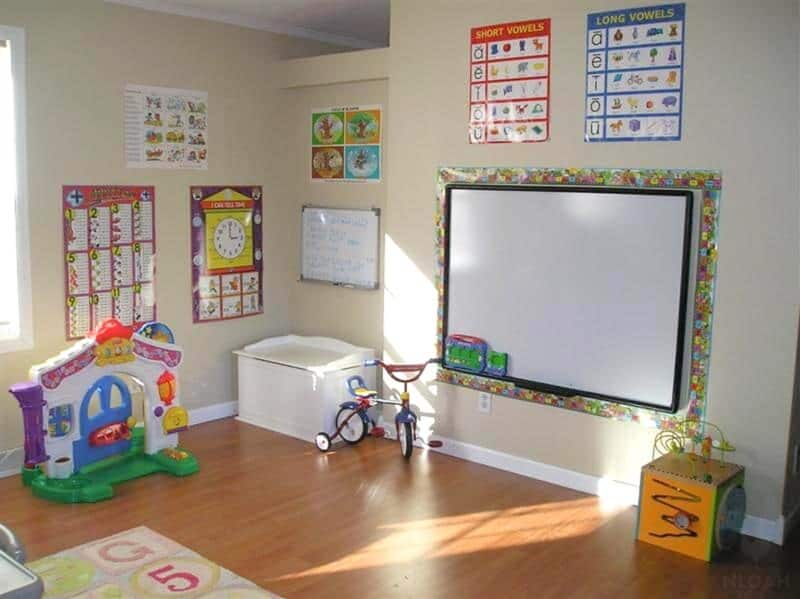
There will be many trial and error scenarios on the path to homeschooling successfully. Few folks get it exactly right from the start – even if the parent has a background in education.
Expect to have some growing pains during the first year of homeschooling. Even though everything might not run seamlessly, that does not mean your children will not grow. Learn, enjoy, and even cherish the experience.
There Are Many Ways To Homeschool – And It’s Ok To Change Your Mind
The act of choosing a homeschool curriculum can be the most frustrating and hectic part of the entire process.
Nearly every homeschooling website you will come across will insist that the chosen homeschool curriculum style is the best, and must be used exclusively as it was designed – without any deviation or intrusion of other learning styles.
The first and biggest mistake you can make when starting to homeschool is believing you have to choose only one learning method or curriculum and carve that decision in stone.
Many (if not most) homeschooling families tweak one or more academic methods to suit the needs and desires of the family.
Not only can you mix and mingle homeschooling curriculum and methods, you can also decide that the direction you wanted to take is not panning out as planned and try something new entirely.
That’s the beauty and freedom of homeschooling, you are not roped into a rigid educational format that is unable to change to best meet the needs of your children.
Another common curriculum related issue some parents wish they had avoided when they first started to homeschool was forcing all of their children to learn the same way.
As any parent already knows, no two children are exactly alike – not even twins. One child might learn best in a more hands-on and relaxed manner and another with more structure -and perhaps a third that excels when given more solitude to read and complete lessons.
There is no right or wrong way to either teach or learn. The best homeschooling parent will be flexible enough to adapt to each child’s learning needs and style.
Don’t Expect Homeschooling Alone To Cure Behavior Or Learning Struggles
A child who is struggling with either behavior or learning issues (or both) in a traditional school environment will not likely immediately be “cured” of those problems simply by starting homeschooling. Do not expect an overnight change provoked solely by a new learning environment.
Even if the public school environment, a teacher, or a lack of counseling services was the primary cause of a child’s issue, it will take time for the child to adapt and improve – and for the parent to undersant how to prevent and deal with outbursts or struggles going forward.
Securing a private tutor, speech therapist, or other type of physical or mental health therapy may very well still be required even though the child has been removed from an environment you feel caused or contributed to the problem.
You do not, and should not strive to do everything on your own when homeschooling. Use all the tools and resources at your disposal to offer the all around learning, and aid your children need.
You Are Not In This Alone
Even though it may feel like it at first, you are not in this homeschooling adventure alone. There are some superb national and state homeschooling organizations that are free to join – some of which have regional or local chapters, as well.
It is also not uncommon for homeschooling parents and grandparents to start their own informal homeschool groups on Facebook and other forms of social media.
The purpose of these groups varies, but often the members share resources, plan field trips together, create learning pods for special projects, recommend tutors for high school college prep work, and even just to lament about struggles and cheer on successes.
Many first time homeschooling parents can grow to feel lonely if they are also new to being at home with children all day – sans any adult contact or conversation.
Some days, simply having a virtual lunch or coffee break with other homeschooling moms can be just the break you need to destress and refocus happily on teaching the children.
There Was No Reason To Worry About Socialization
Probably the biggest misconception about homeschooling is that your child will suffer from a lack of socialization.
First, let’s zero in on the socialization opportunities offered in government school to better compare how the two vastly different methods of homeschooling actually stack up from a socialization perspective.
Children have about 15 minutes of homeroom where they can quietly talk to those seated next to them at desks or at a table. There are usually only two recess sessions per day, each one lasting about 15 minutes.
There is also lunch time which lasts a half an hour or so where children can talk to others in their own class seated next to them at a table. Some socializing occurs during gym class once or twice a week, as well.
The individuals the children talk to are restricted to only those in their class, except at recess and possibly at lunch. Homeschooled children learn how to interact with folks of all ages who share the same interests as well as those who do not.
The common once a week local homeschool group get togethers at parks, library social rooms, or at each other’s home at least equal the amount of time students in a government school get to spend actually socializing with each other.
In addition to planned meetups, homeschooled children in almost every state can also participate in not just youth sports but school extracurricular sports and clubs. In some states, homeschooled children can also attend only select classes at their home district.
If you are homeschooling just one child and have not connected with a local homeschooling group and are worried about socialization, perhaps allowing your child to go back to government school just for “specials” like gym, music, and art classes might be something to consider.
Signing the children up for scouting and 4-H clubs is also another great way to ensure he or she is enjoying peer-to-peer time while homeschooling.
How Much Time I Will Have To Spend Sitting With My Children While They Learn
During the preschool through age nine or 10, you should plan on spending the bulk of the day actively engaging with your child while homeschooling – even if you plan on using a lot of technology in the curriculum.
Even young children can work independently on some of their lessons, but you will still have to spend a significant portion of time instructing and aiding them in the basic reading and math building blocks of learning.
When homeschooling children of multiple ages you can work at a table with them, helping each at the same time or using independent hands-on or “read to me” electronic resources, or learning apps geared to their specific age to allow the child to work independently for a little while.
How Long A Homeschool Day Should Be
A homeschooling day is decidedly shorter than a day spent in government school – at least as far as traditional academic learning is concerned.
The general rule of thumb is that a child should spend one hour per grade level they would have been if still attending public school, when homeschooling. For example, a second grader would spend about two hours in structured academic lessons each day.
Homeschooling parents often reserve Fridays for field trips, library trips, special projects, or volunteering programs – all of which count towards homeschooling hours for the year in most states.
What All Counts As Homeschooling Hours
It might seem counting how many hours a child is homeschooling each week would be a simple and straight forward equation, but that is not necessarily the case.
In addition to seated academic work, there are a plethora of other joyful learning activities that also can fulfill not just homeschooling hours minimums as defined by state boards of education, but also nourish the child’s mind and spark a greater interest in any given topic.
The flexibility of homeschool learning activities is why a growing number of parents homeschool year round for a few hours each day or a few days per week when activities and opportunities for learning present themselves.
Examples Of Non-Traditional Homeschooling Activities
- Swimming lessons
- Hiking
- Reading story books at bedtime.
- Learning about new places while traveling on vacation
- Identifying wild flowers
- Volunteering at the local dogs shelter, senior center, etc.
- Pet care
- Barnyard chores
- Playing board games i.e. “gameschooling”
- Gardening
- 4-H or scout camp
- Canning and dehydrating
- Baking
- Learning how to drive and repair a tractor or vehicle
- Music lessons
That It Is A Good Idea Define What Is Allowed During Homeschooling
Creating a set of home “classroom” rules might not seem like an incredibly important task, especially if you are teaching one child. But, defining boundaries can help avoid parent and child conflict, cause unnecessary distractions and stress, or waste valuable time during the homeschooling day.
You child will never have to raise his or her hand again to get up and go potty, or to get a drink of water. Snacking while learning is most assuredly just fine with most homeschooling parents, as well.
But, once the structured lessons are done for the day, and the child has self-guided or loosely supervised learning time, he or she must know what is allowed as an activity and what is not.
Providing this information will not only make the homeschool day run more smoothly and the child garner far more from the experience, but also help teach sound decision making, self-control, and responsibility.
For example, if electronic screen time is allowed during the day, define what type of activity can be chosen – educational app, documentaries, audio books, research on a topic the child is interested in, etc. Excluding purely entertainment videos and social media should be at the top of the “do not do” list in the homeschool.
Provide materials that the young and older children can choose from in a homeschool tub, bookshelves, or on the table each day for their self-guided learning.
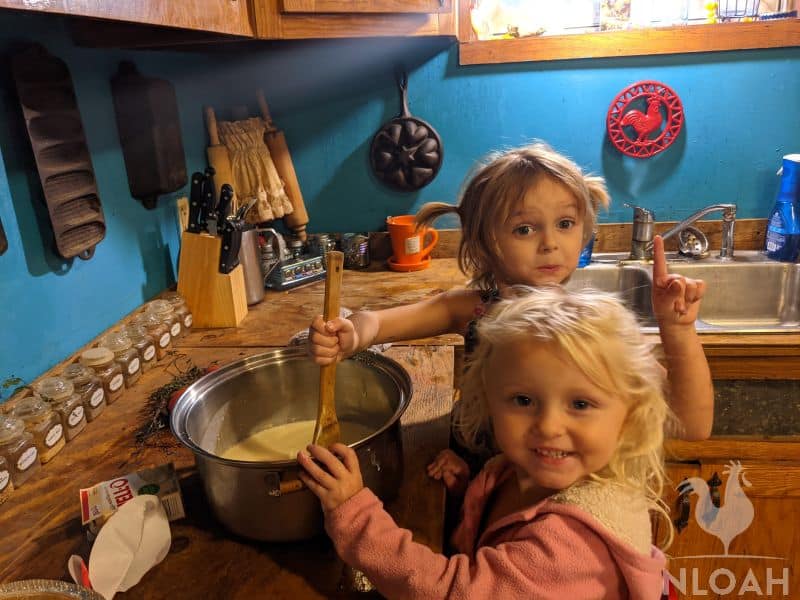
Learning Fun Activity Examples
- Storybooks
- Electronic reader and storybook sets
- Board games
- Puzzles
- Building Blocks – Lego
- Cooking
- Coloring books
- File folder games
- Healthy snack ingredients and recipe cards
- Paints, scissors, and general crafting materials
- Felt Board and homemade or purchased sets
- Little scientists tools – magnifying glass, microscope, telescope, test tubes, etc.
- Play alone games – Smart Games (like the one pictured below), and LeapFrog Leapstart 3D pens are among the favorite in our homeschool.
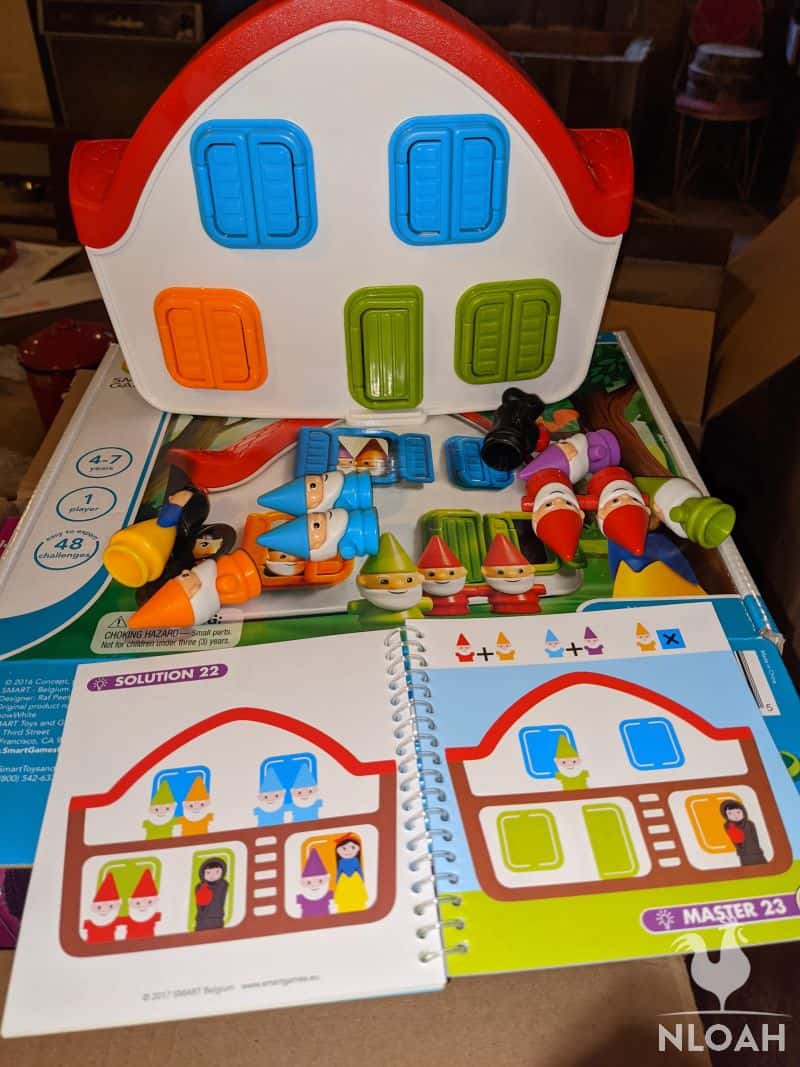
Books, Books, Books
Litter your home with books of all types for the eager young minds to consume. Choose books of all types, paperbacks, hardbacks, audio books, and read to me books – even read aloud book videos on YouTube are an excellent resource.
Reading is the basis of all learning. Not being able to read will vastly inhibit the child’s learning in all subjects as he or she grows.
Encourage reading on any topic the child is interested, the important thing is the child is reading and comprehending the information that is being presented. If your little princess wants to read 20 books about fairies a week or your little man needs yet another book about dinosaurs to read, roll with it.
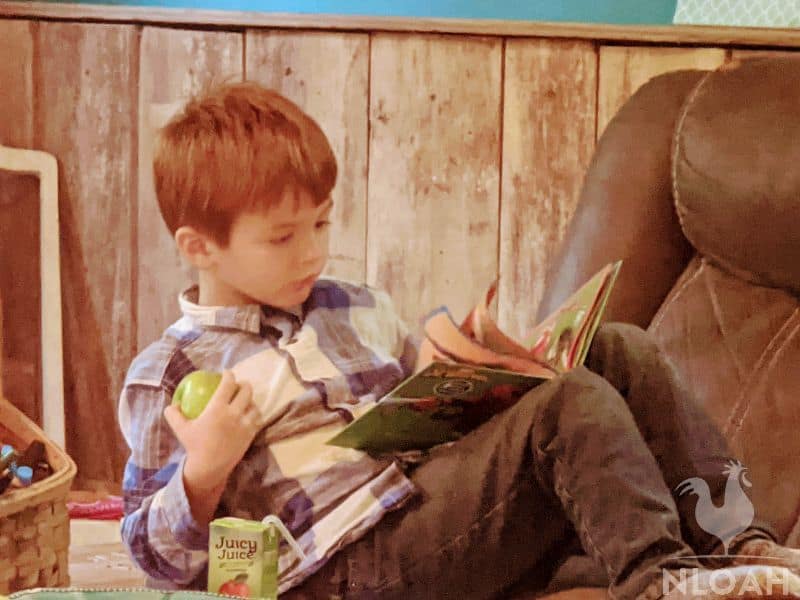
You do not need textbooks in your homeschool, I do not know of any state that requires the use of such a thing. While some children might need such condensed and rigid structures, most others will be far more interested in “living books” both fiction and non-fiction on a subject they are studying.
The in-depth and focused look at a person, place, or thing offered in living books is far more interesting and exciting – and likely to be retained that dry and boring sentences found in a brief textbook lesson covering the same material.
Both structured reading class and self-guided reading can take place curled up on the couch with a comfy blanket, under a tree with a picnic lunch, or in the car.
I Don’t Need A Classroom
Homeschooling does not function like a government school and it does not need to look like one either. If you want to turn a guest bedroom into a full on colorful classroom complete with a chalkboard and kid-sized table or desk, go for it. But, doing so will not help your child learn.
All you need is a dedicated space for seat work that is free from too many distractions and a place to store your materials. Sitting at the kitchen table or a table placed in the playroom will surely suffice.
Instead of spending money trying to replicate a traditional school classroom on a smaller level, invest instead in open-ended learning toys, materials, and experiences for the children – they will thank you for it and the rewards will be far greater.
Organization Is Key
Not only is being organized when planning homeschool lessons, activities, and projects important for the learning process, it is also vital to the reporting process that states require. The manner in which a state board of education requires a homeschooling parent to record, prove, and present what the child has learned during a traditional school calendar year varies substantially.
You must keep a calendar of important reporting and testing dates to ensure that any requirement is met in a timely manner, and does not cause any potential violations that could end your homeschooling plans.
Writing out lesson plans and keeping a portfolio of the child’s work are strongly recommended, even if you state reporting rules are currently more vague or less stringent.
Possessing all the information you need to show what your child has learned and how each subject matter and hourly requirement has been met can also help avert any issues with the state not just for you, but for the child upon graduation when college application time arrives.
Final Thoughts
Your homeschooling prowess will increase and stress decrease the longer you are at the helm of your child’s educational journey – just as occured when you progressed from being a newbie mommy or daddy to the parent of a preschooler.
Getting some experience under your belt and connecting with others who are both new and seasoned homeschooling parents will offer a nearly unmeasurable amount of guidance, tips, resources, and yes, even help you feel that you are not completely screwing up your child’s education.
Children love to learn. We see that light in their eye from infancy through their moody teenage years. What many children do not love is the rigidity and often illogical and tedious nature of a typical public education environment.
Remove the one size fits all boot camp style of learning from the educational process and that light in their eyes will continue to shine as they help guide themselves on the exciting adventure of discovery that learning was always intended to be.
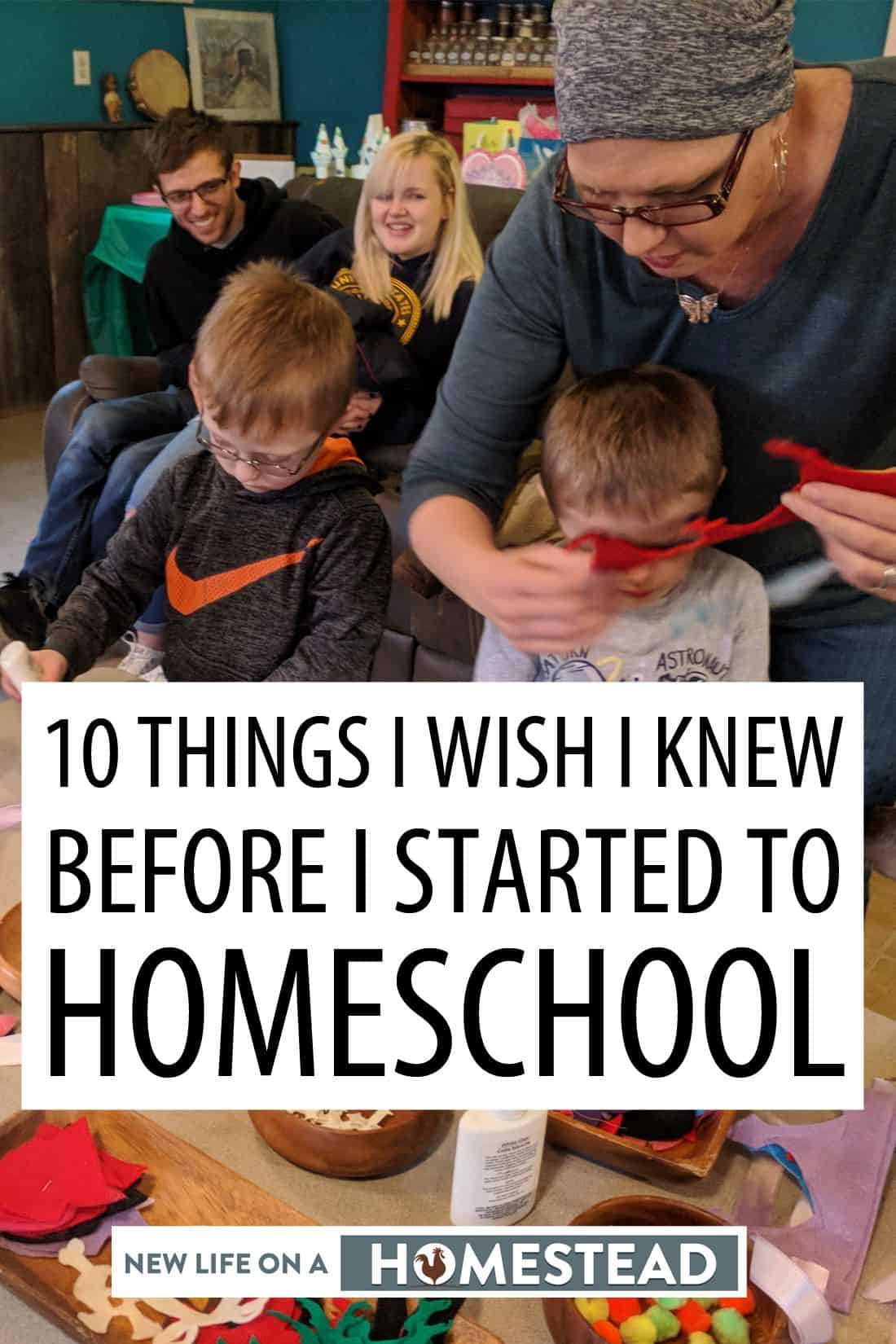

Tara lives on a 56 acres farm in the Appalachian Mountains, where she faces homesteading and farming challenges every single day, raising chickens, goats, horses, and tons of vegetables. She’s an expert in all sorts of homesteading skills such as hide tanning, doll making, tree tapping, and many more.

Homeschooling is great and can be relaxed however, parents need to check their states academic and educational laws first. Every state is different. If a program is not accredited or incorporated, schools can choose not to accept their transcripts if they ever transition to public, private, Christian or charter schools. Even colleges. You have to protect your child’s future by making sure to keep records and progress reports. These will be asked for if entering another school or college. This has been very upsetting for some parents when their child has worked so hard to only not be accepted in the future because no records or transcripts were kept. Parents need to check into the the program or company they choose to use and make sure of their legalities, license and incorporated. This will back you up if there is ever an issue in the future.
Parents also need to make sure that as soon as their child becomes of legal school age that they contact the State Board of Education and tell them they will be homeschooling their child. I have known parents that were almost charged with truancy because it was not reported. When a child is born they are issued a ss number. Believe me the govt keeps up with this. When they turn legal age for school and they are not counted for, they will call. This has happened to some parents. Parents just need to research first is all and back themselves up legally. All states are different.